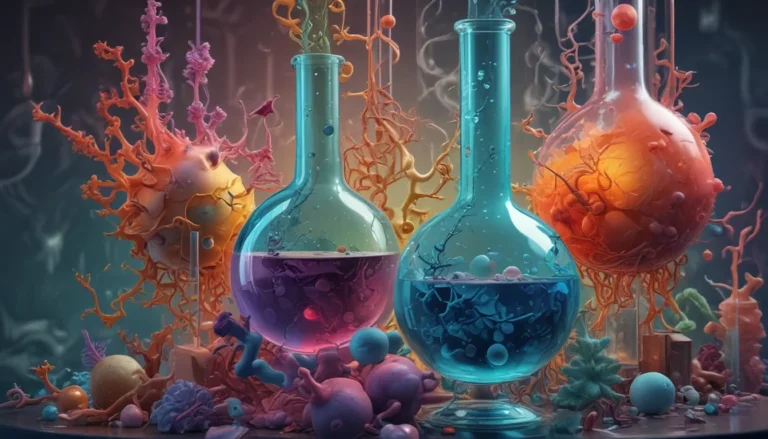A Note About Images: The images used in our articles are for illustration purposes only and may not exactly match the content. They are meant to engage readers, but the text should be relied upon for accurate information.
Chemistry is a realm filled with intricate concepts, and one of the key players in this fascinating world is the bond angle. Bond angle, the angle formed between two adjacent chemical bonds in a molecule, may seem simple at first glance but holds extraordinary significance in shaping the properties and behavior of molecules. In this article, we will embark on a journey to explore 19 extraordinary facts about bond angles, shedding light on their importance and complexity.
So, put on your lab coat, fasten your safety goggles, and get ready to dive into the intriguing world of bond angles!
Unlocking the Secrets of Bond Angles
Bond angles are not just arbitrary numbers; they play a crucial role in shaping the world of chemistry. Here are some key takeaways to kickstart our exploration:
- Understanding bond angles helps predict the shape and properties of molecules, influencing molecular polarity, hybridization, and symmetry.
- Variances in bond angles can impact the strength of chemical bonds, affecting molecular vibrations and overall symmetry.
The Influence of Bond Angle on Molecular Geometry
The bond angle is not just a number; it dictates the three-dimensional arrangement of atoms in a molecule, determining whether a molecule is linear, trigonal planar, tetrahedral, or other complex shapes.
The Impact on Bond Strength
The bond angle influences the overlap of atomic orbitals, directly impacting the strength and stability of chemical bonds between atoms.
Exploring Variations in Bond Angles
Bond angles are not set in stone; they can vary from 0° to 180° depending on the atoms and types of bonds involved, resulting in acute, obtuse, or right angles.
Unveiling Specific Bond Angles
Let’s delve into some specific bond angles in different molecular geometries:
- Linear molecules have a bond angle of 180°, seen in examples like carbon dioxide (CO2) and acetylene (C2H2).
- Trigonal planar molecules exhibit a bond angle of 120°, as observed in compounds like BF3 (boron trifluoride).
- Tetrahedral molecules, such as methane (CH4) and carbon tetrachloride (CCl4), have a bond angle of approximately 109.5°.
The Role of Bond Angles in Molecular Properties
Differences in bond angles can lead to variations in molecular polarity, influencing intermolecular forces, solubility properties, and overall molecular behavior.
Impact on Molecular Vibrations
The bond angle affects the vibrational frequencies and modes of a molecule, contributing to its infrared and Raman spectra, providing crucial insights into molecular behavior.
Predicting Hybridization Through Bond Angles
The bond angle can assist in predicting the type of hybrid orbitals involved in bonding, such as sp, sp2, or sp3 hybridization, unveiling the structural intricacies of molecules.
Delving into Specific Examples
Explore specific bond angles in commonly encountered molecules:
- Water (H2O) has a bond angle of 104.5°, contributing to its bent molecular shape.
- Ammonia (NH3) exhibits a pyramidal shape with a bond angle of 107.3°.
Lone Pairs and Their Influence
Lone pairs of electrons around central atoms can distort bond angles, creating a bent or V-shaped molecular geometry, impacting the overall shape and properties of the molecule.
Unraveling Bond Angles in Hybridization Theory
Hybridization theory explains observed bond angles by combining atomic orbitals to form hybrid orbitals with specific geometries, providing a deeper understanding of molecular structures.
Exploring Molecular Symmetry
The symmetry of a molecule is intricately linked to its bond angles, allowing molecules to be classified into different point groups based on their geometrical arrangement.
Practical Applications and Measurements
Techniques like X-ray crystallography and spectroscopy allow scientists to experimentally determine bond angles, providing crucial structural information about molecules and advancing our understanding of chemical structures.
Conclusion: Embracing the Beauty of Bond Angles
In conclusion, bond angles are not just numbers; they are fundamental in shaping the properties and behavior of molecules. By unraveling 19 extraordinary facts about bond angles, we have gained a deeper appreciation for their role in chemistry, from influencing molecular shape to impacting molecular properties.
From predicting hybridization to exploring molecular symmetry, bond angles are a cornerstone in understanding the intricate world of chemistry. As we continue to delve into the mysteries of molecular structures, bond angles stand as a guiding light, leading us towards new discoveries and endless possibilities in the realm of chemistry.
FAQs: Answering Your Burning Questions
Curious about bond angles? Here are some frequently asked questions to quench your thirst for knowledge:
- What is a bond angle?
- How are bond angles determined?
- What are some common bond angles?
- How do bond angles affect molecular properties?
- Why are bond angles important in organic chemistry?
Embark on Your Chemistry Journey
Exploring bond angles is just the beginning of your chemistry adventure. Dive deeper into the world of molecular shapes with our article on VSEPR theory, unraveling the influence of electron pairs on geometry. For more captivating chemistry facts, explore our comprehensive collection covering a wide array of topics.
Our commitment to delivering engaging and trustworthy content ensures that each fact shared is vetted by real users like you, guaranteeing accuracy and reliability. Trust in our dedication to quality as you embark on a journey of exploration and learning with us.






